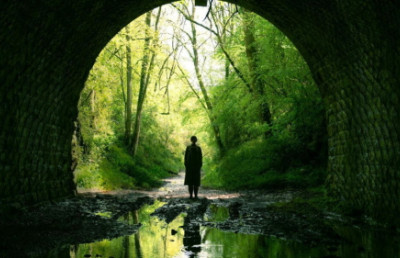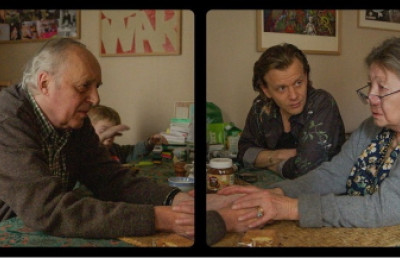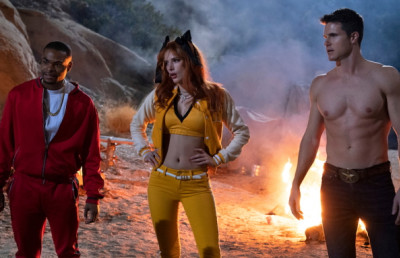The Experience of a Life Time: Death, Mortal Peril, and Adventure on Screen

1-Introduction: The Contract with the Audience
Chafing against prolonged lockdown conditions at the start of the second pandemic year, mass audiences of popular entertainment are experiencing, one might expect, the slow decline of direct physical experience. With this dearth of direct embodied experience has come an increase in the importance of vicarious experience, as a supplement or even as a substitute for what has atrophied under prolonged lockdown conditions. Most obviously, this goes for the cinematic genres Linda Williams has dubbed “body genres,” i.e. genres capable of generating in the viewer a direct physical response—from the shudder of hairs at the nape of the neck standing up, which, quite literally, provide the horror genre with its moniker, and the tears elicited melodrama, to the physical responses to pornography—by visualizing and dramatizing bodies on screen enthralled by corresponding hyperbolic embodied emotions. 1 What adventure gives us is the vicarious experience of physical danger—the more serious the threat, the more thrilling the experience.
As a comment on the current situation, and a point of departure for thinking further about adventure, an article from January 2021 in the German newspaper Die Zeit illustrates this lamentable condition by its headline alone: “Professional Adventurers: If you know how it ends, it’s not an adventure” (Waschbüsch, Jan 28, 2021). 2 The statement contained in this headline is, on the face of it, so obviously false, so obviously the exact opposite of what we know to be true, that its sentiment, not its veracity, deserves closer attention. Clearly, adventure is not a story to which the ending is radically indeterminate; its ending is a happy ending, and that happy ending is, in turn, defined by the survival of its adventurer protagonist. It is crucial to note that the speaker is a representative of an industry that sends real estate agents up the flanks of Mount Everest, software designers onto Amazon jungle cruises, and members of human resource departments to team-building exercises in which humans face off, together and alone, against Nature at its most recalcitrant. If any outcome of these organized adventures really were possible, surely the accidental death by freezing of a real estate agent during the ascent to a Himalayan peak, or the accidental drowning of a software engineer in the waters of the Amazon would not even make the headlines (not to mention reflecting back negatively onto the agency that sent them, un- or under-prepared to their grim, pathetic demise).
At the same time, the unquestioning self-assurance with which the statement is delivered points to the failure of such adventures, not in their outcome—which, it goes without saying, includes the survival of the adventurer as a foregone conclusion—but in their very conception. An adventure too obviously staged with a fortuitous outcome in mind fails to live up to the essence of the term itself: the taking of risks, and facing off against dangers, some of which, at their most extreme, might kill you. If the adventurer’s death were not within the range of possible outcomes, the activity would hardly deserve the name in the first place (or maybe deserve it merely in its application as a metaphor, with a tinge of irony, as in, for example the term “armchair adventurers” or a title like Adventures in Babysitting [Chris Columbus, 1987]). The pleasure of consuming adventure, therefore, is like that of going to the zoo: we do not go to look at the lions, we do to look at the bars between ourselves and the lions. With this caveat, the true nature of adventure lies between these two polar opposites—too little authenticity of danger and risk on one end, too much of it on the other.
Of the various obstacles and challenges adventurers need to face along the way, death itself is the epitome. In refining adventure to its essence, the breaking of a leg or the loss of a limb qualify as impressive sacrifices made in the course of attaining the thrills of adventure. But they pale in comparison with defying death. As a character, about to go “not only where no one had ever been before—but where no one would ever go again,” in Arthur C. Clarke’s novel of alien exploration Rendezvous With Rama (1973) puts it so succinctly: “if there were no hazards, there would be no achievement—no sense of adventure” (118). Having looked it in the face, having escaped from its clutches, and having triumphed over it is the hallmark of adventure. Genres that tend to dramatize conflict by presenting it as an embodied clash of opposites—Yvonne Tasker compounds ”action” with “adventure” into a single iteration of this form of dramatized embodiment (Tasker 2015: 1-26) to form a distinct cinematic genre, rather than regarding “adventure” as a cross-genre mode—tend to arrive at death as the logical conclusion. 3 It is the epitome of whatever incremental punishment their heroes and heroines can take in the course of their adventures. Death is also essential to these genres since their mode of presentation is predicated on sensationalism and hyperbole, two factors exacerbated by the switch from the real bodies of stunt performers on screen to the excessive performativity of digital bodies added in post-production manipulation. Even—or perhaps all the more so—in these disembodied digital performances, something must be at stake, and what stake could be higher than your own life (or rather, could have been higher: after all, you get to tell the tale)? More than the death that gives the murder mystery its name; more than the death—the more gruesome, the better—that is at the heart of the horror genre, the adventure narrative depends on death as its essential ingredient. Its story is that of the journey toward death, and it must be possible to tell that story in retrospect.
This narrative duplicity distinguishes between adventure narratives and stories that move their protagonist toward death. While adventure narratives, rendering the ultimate escape from death a foregone conclusion, allow the audience to experience pleasure at witnessing the ingenuity with which this escape is accomplished—be it that of the adventurer, who cleverly masterminds an escape, or of the storyteller, who just as cleverly contrives a plot that allows for escape. Leo Tolstoy’s The Death of Ivan Ilyich (1886) or Philip Roth’s Everyman (2006)—two notable examples of narratives not only positing death for their respective protagonists, but steering toward death as the conclusion of the narration itself—lack this rerouting of anxiety over the character’s potential demise into the pleasures of personal or authorial ingenuity. The fact that death, Tolstoy and Roth, is not just as possibility but an actuality distinguishes them from adventure stories, in which death is just as real (in fact, the more real, the better), but ultimately disavowed in the act of being transcended.
Another such displacement of narrative energies allows for the death—this time not only posited as potentially, but actually occurring—of minor characters along the way. The death of sidekicks or travel companions along the way allows the adventure narrative to incorporate an element, and address an issue, from which its protagonist must remain insulated if his or her role as an adventurer is to remain insured. One might expand this category also to narratives with more than one adventurer at the heart of the narrative. This variant of the trope may have started with the Odyssey. Its more recent incarnation might be the fate of Harrison Ford who, as the eponymous Indiana Jones, is kept viable through the death of fellow characters (and is thus currently slotted for yet another sequel, at the age of 79), but as Han Solo—i.e. demoted to the status of minor character within a larger ensemble piece—can be written out of the serial narrative through a sacrificial death furthering and legitimizing generational continuity across actors and audiences (Star Wars: The Force Awakens, 2015). Legitimized by a narrative rationale (e.g. the generational handover of power from an older to a younger figure), even a central character might actually die, though the displacement of the full impact of this death onto the secondary figure, ascending to full narrative relevance as if the story had been about this figure all along, relegates actual death again to the rank of something that exists to be transcended.
The disavowal of death in the adventure narrative via these strategies of displacement might very well be the marker of its consideration not as “art” or “literature” but as popular culture. As much as the adventure narrative owes its existence as a compensatory fantasy to the increasingly disembodied, managed, and sanitized life of the middle classes within industrial modernity—the uneasy awareness of lives being “managed” by industrial modernity currently exacerbated by pandemic conditions—its escapist potential is directed largely at the immovable, undeniable, and unmanageable reality and finality of death. 4 That finality, if seriously entertained, would get in the way of popular culture’s alignment with serially extended narratives (in contrast to “literature” and, in its modernist iteration, celebration of the single, solitary, and somewhat hermetic “masterpiece”). At that point where cinema and high modernism meet, the potential of stories that move inexorably toward death becomes visible as a radical challenge to conventional narratives in popular culture. In, for example, the narrative logic of serial murder foreshadowed in a children’s game in Fritz Lang’s M (1930), we see the possibility that death, when serially meted out as murder and taken to its logical extreme, negates narrative altogether. This occurs in something I have been calling the “elimination plot,” a
curious type of narrative—for the group [of characters, with the adventurer among them] as a whole, as well as for each individual member of the group, who is hoping to be that last survivor, that last one standing. The narrative arc is stark and immediately obvious, as it moves from a world rich in options, through a process of gradually diminishing options, toward a world without options: from communities to individuals, from complexity to simplicity, from plenitude to scarcity, all the way toward a zero point in the distance where the narrative threatens to consume itself. (Hantke 18-19)
Arthur Conan Doyle, famously, had to cave into popular demand after killing off Sherlock Holmes beneath the Reichenbach Falls, but then Holmes had always existed not on a clear linear time line but as a composite of texts with little regard for a coherent biography. But what if James Bond were not to wiggle out of his handcuffs in time and plunge, instead of making a hair-raising, death-defying last-minute escape, from the cliff? What if Indiana Jones were to get flattened by that rolling boulder, Lara Croft fail to grasp that vine over the chasm, that one small slip, that minuscule mistake that would end it all? [[During its 2019 season, Saturday Night Life satirized this precariousness, as exemplified by a recent spate of “realistic” near-future science fiction films like Interstellar, Ad Astra, and Gravity, in a skit entitled “Space Mistakes,” in which intrepid space explorers die horrible deaths, again and again, after slipping up in the most trivial tasks. See “Space Mistakes” (https://www.youtube.com/watch?v=FBFuiHZRylY). At times, adventure narratives have made bold forays toward death—think of Admiral Jean Luc Picard’s death at the end of the eponymous miniseries! But without the courage of its convictions, and in a gesture rendering moot the hyperbolic sentimental investment in the character actor’s grand death scene, future seasons of the series were insured when the character was brought back from the dead by some token of sci-fi imaginary technology. Annie Wilkes, the fictional character from Misery and Stephen King’s stand-in for the intelligent consumer of serial popular culture, would have cried foul at this staggering cop-out (and, presumably, come after the series’ writers with vengeance in her heart)!
Given this occasional willingness to bend the rules of adventure toward actual death, the question remains whether adventure narratives are categorically incapable of confronting death, and might send one on a search for adventure narratives within popular culture that are willing to bend, and perhaps even break, the rules of the contractual arrangement with the audience—that death must be seriously entertained, only then to be transcended—in favor of the first, and at the expense of the second part of this contractual arrangement. In the bending, and then the violation, of this one essential rule, how far can an adventure narrative go before it ceases to be one and turns into something else? To pursue answers to these questions, let’s begin by looking more closely at a film which adheres closely to the conventions of the adventure narrative but ends up being strangely haunted by the death it posits, depends on, and defers.
2. Counting Down to Zero: The Martian (2015)
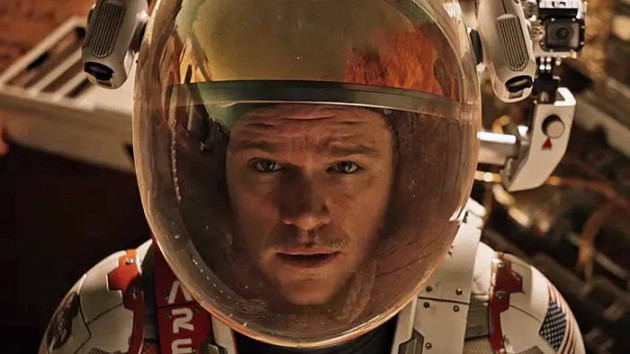
Somewhere in the course of Ridley Scott’s film The Martian, there is a remarkable moment, a fork in the narrative road, from where the film moves on in one of two directions. To a savvy viewer, or any viewer, for that matter, the road taken hardly comes as a surprise given the medium in which the story is told and the restrictions placed upon that medium by the market in which it must succeed. What does come as a surprise, however, is that the road not taken remains in view throughout the film; that the film does not altogether ban the thought from even taking shape; that, instead, it allows it to manifest itself and, once having taken shape, to remain as a faint echo reverberating through the rest of the film as it pursues that other road, the one it has, predictably enough, taken.
The remarkable moment occurs somewhere along the travails of astronaut Mark Watney (Matt Damon), assumed to be dead and abandoned by his crew mates on Mars during their hasty emergency take-off. Once the error has been discovered, and Watney has confirmed to those in charge that he is, indeed, very much alive, the question arises whether it is within humanity’s means to rescue him. Whether there is a will to send help or to return to get him—that question is declared moot almost immediately, banished from thought, so that the sole remaining question is whether there is a way to accomplish a rescue. The film transforms this particular question almost as fast and almost as inevitably as it did the one about there being a will. This second elegant inevitability is the shift from the question “Is there a way?” to the question “What way is there?”
It is from this second question that the film generates the lion’s share of its screen time, elaborating with great narrative and affective ingenuity upon the celebration of practical and scientific ingenuity. Its arrival at the final solution to what it has construed as a complex, multi-faceted engineering problem—how to retrieve astronaut Watney from Mars alive—follows the same rule as any good detective novel or any credible three-dimensional character: it must have been inherent in a set of ontological rules set down transparently from the very beginning, and yet it must have the power to surprise. As such, it must ensure the viewer’s active participation, yet sustain control over that viewer lest the solution becomes predictable too soon. Tirelessly enumerating the many ways in which this final rescue plan can still fail in its execution, The Martian succeeds at this beautifully, delivering an uplifting ending that tempers its sentimental corniness by feeling precariously achieved and hard-earned.
The specific details of Watney’s dramatic rescue is staged as a dense fabric of themes. This is where, most likely, the academic critical labor on the film is going to be focused, examining gender roles, attitudes toward technology and ecology, or the significance of Chinese intervention in the course of the plot (and the film’s aim at international markets). All the while, the film’s central thematic core is clearly defined. It revolves around this question: is it worth it? All the efforts, all the risks, all the hopes and fears—to rescue a single human being, and not an exceptional one at that: is it worth it? Broadening the scope of this question a little further, the question reads thus: in a bad and fallen world, politically compromised and economically unjust, what is the significance of a single good deed? Or, framed more personally, why should I do the right thing—and what does it matter if I do—if around me the world keeps grinding on in all its violence and injustice?
It is difficult to tell whether this question is trite or profound. Versions of it that circulate throughout popular culture have a ring of triviality about it; take the didactic fable about the little boy returning beached starfish to the ocean waters who, when asked what it matters considering the thousands of starfish on the beach, answers wisely, “Well, it mattered to that one,” as he flings another one into the water. One might meet with equal suspicion the heavy-handed metaphor of the “silence of the lambs” in the novel and film by that same title: what does it ultimately matter if our intrepid FBI heroine neutralizes one bad man when another has just gone free (and many others, presumably, will continue to ply their gruesome trade)? That one good deed in a fallen world—what does it matter?
The Martian raises that question without having a more satisfying answer than any of these other stories, but it does certainly offer its viewers a range of possible answers. The crew of the space mission who inadvertently abandoned Watney on Mars—they have their own reasons to risk their lives when they volunteer to turn back and rescue him. In turn, the institution back on Earth, tied into a set of external political and economic imperatives and concerned with maintaining an institutional identity, has its reasons. And then there is humanity at large, those crowds gathered in New York and London and Beijing, breathlessly watching the live broadcast of the rescue and breaking out into collective cheering when the rescue succeeds: they have their reasons, which is to say that we, the viewers of the film, have ours.
In reference to all those individuals, institutions, and collectives, the significance of Watney’s rescue is predominantly symbolic. It matters not for who he is, but for what he stands for. He is us, facing our own mortality, and in an equally symbolic effort, we just conquered it. By taking us briefly into the life of Watney back on Earth, mortality remains conquered as well. His life post-rescue begins its count with “Day One,” a reversal of the countdown to his anticipated and preprogrammed death of Mars pre-empted by humanity’s collective scientific efforts. This is a count that rises, open-ended, unlike the previous one that had moved inexorably toward Zero, nothingness, extinction, its final destination. In its own way, The Martian reiterates the trope of living happily ever after that animates fairy-tales and much other folkloric culture. For Watney, the rescue has restarted time—for us, the viewers, it has frozen him in time, a symbol of the conquest of mortality.
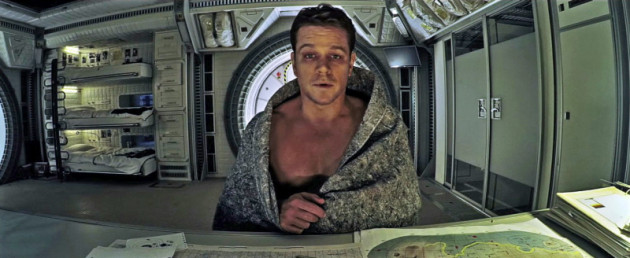
While this theme, seen from Watney’s perspective, comes across as fairly conventional, its implications are more complex and surprising whenever the film invites its viewers to switch their identification from the rescued to the rescuers. True, granting the NASA scientists, bureaucrats, and flight crews so much on-screen time is a move designed to “open up” Watney’s claustrophobic solitary perspective. Even with this parallel narrative strand, the film labors diligently to come up with ways to legitimize Watney’s constant explanatory monologue, alternating between digital diary entries and a steady stream of conversations Watney has with himself. Narrative considerations aside, though, the switch of perspective matters thematically. True, there is anxiety relieved by joy in imagining ourselves as Watney. But, perhaps even more important, there is anxiety relieved by joy in being allowed to rescue him. He gets to live, but we get to help.
On the side of anxiety, the film manages to wring surprising life out of the concept of suspense. Though much of Hitchcock’s famous definition of suspense depends on the cognitive differential between the audience and the character it identifies with—i.e. we know more than he or she does—this cognitive differential ties directly into one of relative degrees of agency. We know that there is a ticking bomb under the table, but the character on screen does not—and we cannot warn him or her of the impending danger. It is this state of helplessness that induces the anxiety at the heart of suspense. It is painful, excruciating, to be helpless, powerless, unable to intervene when something bad is about to happen. Something bad—like astronaut Mark Watney, alone on a planet millions of miles away, slowly dying, and us, watching, unable to help. Again, much academic labor is likely to be invested in the process of narrating this experience: how the film fetishizes technology, or how it humanizes institutional power, or how it essentializes practical and scientific ingenuity as expressions of (American) national character. Leaving this labor aside for a moment, I want to focus instead on this final emotional payoff, however: the pleasure viewers derive from regaining agency in the process of intervening in the spectacle of a mortality dramatized so as to be observed. The pleasure, in other words, we derive from getting to save astronaut Mark Watney—our one good deed in a fallen world.
The moment that becomes the wellspring of this pleasure in The Martian is the turning point, the quick decision, that fork in the road mentioned earlier, when the film switches from “Can Watney be saved?” to “How can Watney be saved?” Even if the rescue plan were to go awry, even if with the best of intentions that plan were to fail, tragically or heroically, it is with that second question that the pleasure of intervention becomes possible. But what of that fork in the road, what of that moment of hesitation before the film makes the switch? Here is where the first question lives, a more fundamental and thus a more alarming and unsettling question: what if Mark Watney cannot be saved—not by a lack of individual or political will, by institutional efficiency, by scientific ingenuity or patience, or commitment of resources, but by the laws of nature, by the sheer inexorable forces of physics?
As a science fiction film, The Martian may refer back most directly to a cinematic antecedent, Robinson Crusoe on Mars (Byron Haskin, 1964), which tells, barring some minor differences, the same essential story. Kept more subtly in the background, however, is another science fiction text, Tom Godwin’s science-fiction story “The Cold Equations” (1954), its title having become synonymous with a concept subsequently picked up and worked through in science fiction time and again. In its most basic meaning, the phrase marks the unyielding rigor of a material world ruled by natural laws. Dramatized by science fiction, the phrase marks the human world’s encounter with this natural world and its lack of responsiveness to human fear and desire. At its most dramatic perhaps, the phrase marks a narrative in which the natural world in its inertness is diametrically opposed to human fear and desire, raising questions not about the human domination of the natural world but the human response to the natural world being profoundly other (i.e. neither “amenable” nor “resistant” to scientific manipulations).
It is at this fork in the narrative road that The Martian might decide not just to entertain the concept of “the cold equations” for a moment—and then to dismiss it in favor of the secondary question in which nature’s responsiveness to human desire is a foregone conclusion—but to embrace it. What if the film were to run through a series of scientific options in trying to rescue Mark Watney, only to discover that one after the other fails to meet the goal of allowing for a rendezvous between the castaway and his rescuers in time? What if this process of gradual elimination were to be played not just down to the only desperate (and thus dramatically rewarding) Hail Mary pass of rescue plans, but, with the courage of its convictions, to the inevitable Zero of options? What, in other words, if there was no way to rescue astronaut Mark Watney? What if he were doomed to die on Mars?
Posing this hypothetical, the argument has veered away from conventional scholarship in two regards. First, it can no longer meet the basic expectation to remain engaged with the film exactly as it finds it, to describe and critically respond to that film and not to some imaginary construct. Second, one might suspect that this imaginary construct comes with a whiff of condescension, as if its implication were to suggest that, had Ridley Scott chosen to leave Mark Watney to die alone on Mars, it would have made for a better film. What would have made this hypothetical film “better,” so the implication might have been, would be the fact that The Martian would have to end with a less conventional Hollywood ending; that this hypothetical film would have denied its viewers pleasures dismissed as dramatically cheap, emotionally sentimental, or politically affirmative. None of these implications have been intended here. Like so many viewers who derived considerable pleasure from the film exactly as it is, I would not want to trade it for a more pessimistic version of itself, a parody of a grimly serious independent film with existentialist pretensions. Instead, I want to remain focused on the experience and the pleasure the film offers to the viewers as is.
The pleasures of The Martian, exactly as it is, include the ghostly presence of this other film—the one arrived at by taking the other road—inside the one in which astronaut Mark Watney is rescued. It is in this other film, this ghostly presence, that we all—his crew mates, the scientists and bureaucrats, and the crowds in New York, London, and Beijing—must be there for him as he inexorably moves toward his death. Again, the alternative to being there for him during his final days is a moral impossibility; wanting to do the right thing, the one good deed, who would have the heart to abandon Watney during this final period, to turn away, to screen out, to mute his story? Just as it was hard to find a way to rescue him, it is now hard not to have found a way; just as the former took all of our efforts, the latter one does, too. Just as we all would hope that we would not left behind and forgotten but that someone would come to rescue us, we hope that when our days are numbered and we can no longer be rescued, we would not be left behind and forgotten.
And just as—on a smaller scale—we can all be rescued, we all live within a bigger scale in which we are terminally beyond rescue. As the Cold Equations would have it, in the long run our story is that of a steady countdown to an ultimate, inexorable, unmovable Zero. Confronted with this human, all too human reality, Mark Watney spends a few days of narrative time in the film asking himself how best to spend the remainder of his days if help will never come. He finds an answer. Abandoning all efforts at saving himself, he returns to the small tasks of his original mission, much to the approval of the desperate NASA scientists watching him helplessly. In these brief scenes, and before the film grants us release by retuning us to a world in which a rescue is possible, The Martian keeps this larger frame alive and available for contemplation. Again, as with the question of the moral relevance of the one good deed in a fallen world, the philosophical proposition feels somewhat trite: if you had a week to live, what would you do with the time you’d been granted? Would you, could you, live every day as if it were your last?
Just as this question haunts the imaginary alternative version of The Martian, the alternative version haunts the film that became a box office success in the year of its release. It is visible in the interstices between the moving parts of the machinery of the adventure narrative that organizes the conventions of the science fiction genre. As much as audiences may have to look past this machinery to delve into this set of questions, it is important to note that—as I have tried to argue—the engagement with these questions does not require a shift away from the pleasures of the actual adventure narrative at all, and a reorientation toward philosophical issues too deep to generate pop cultural pleasure. Engaging with these questions is in itself very much a source of pleasure no less tied up with narrative suspense than what the adventure narrative at its most conventional provides. It is possible that the film’s blockbuster aesthetic, the spectacular business of its visual and narrative execution of plot, creates enough noise to distract from the spectral presence of this other narrative option remains. If so, another film may be required to illustrate what happens when the turn away from death is framed as a more ambiguous diegetic and philosophical proposition.
3. All is (maybe) not lost: All Is Lost (2013)
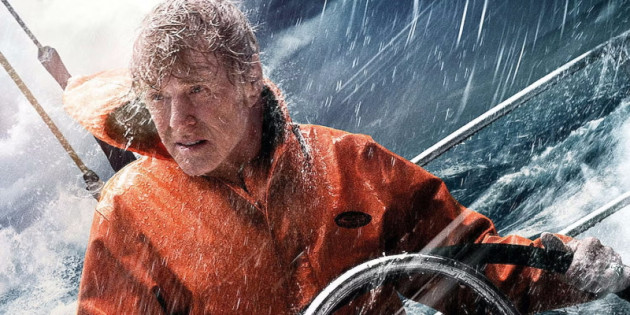
Predating The Martian by two years, and receiving a fraction of its attention and box office success, is a film far more willing to bend the basic convention of the adventure narrative: All Is Lost. Not only is it the diametrical opposite of The Martian in stripping down character, plot, and setting to a single nameless, two-dimensional character, engaged in a single, simple pursuit, in a highly realistic yet starkly abstract environment. Without an explanation who this man is, and why he is here, it is as if the film has taken “the primary operation in adventure tales,” i.e. the “movement away from the ordinary world into an adventurous environment [i.e. “an environment that is already exotic, often primitive and clearly removed from the realm of mundane, modern-day urban existence”]” (Rubin 16), and merely allegorized this “primary operation.” It also engages with its central character’s death much more directly than The Martian by having its narrative move inexorably toward his death as starkly announced in the title. While The Martian’s Mark Watney finds himself facing death in due time, the protagonist of All Is Lost is headed for death far more directly. Viewers might, however, come around to distrusting the literal veracity of the film’s title when the story appears to make good its promise in a final scene. The journey, literally and figuratively, toward this final destination begins with Robert Redford’s character (referred to, in the closing credits, simply as “Our Man”) suffering a minor accident during an extended solo sailing trip around the waters of Java. The slight damage to the boat is fixed without great melodramatic tension. But the accident sets in motion a series of small setbacks that gradually increase in seriousness, until, about halfway through the film, it becomes clear that, barring a fortuitous coincidence (or a miracle), Redford’s character is doomed to die on the open sea. Like The Martian’s Mark Watney, he is in need of rescue; his own efforts merely extend or contract, depending on their level of success, the time he has left. Unlike Mark Watney’s dire situation, however, we do not ever see efforts undertaken elsewhere on his behalf. At best, humanity makes an appearance failing to notice him and passing him by with neither charity nor malice. There is no race against time, no clock ticking toward his terminal moment. From the opening mishap, watching the character create stopgap measures to various cascading failures of equipment, bouts of inclement weather, and moments of personal shortcomings and failures, turns viewers increasingly into witnesses to his heroic yet doomed struggle. Viewers are asked to appreciate his ingenuity and persistence, but are no longer assured with any measure of reasonable certainty that this story is going to end with a successful rescue. Consequently, narrative logic derives from the fact that all minor encounters with the possibility of death along the way—fitting technically and formally into the adventure story’s pattern of dangers posed to be transcended—are merely a matter of guiding viewers to the last such incident, in which the character is then to succumb for good.
That terminal moment comes in what is literally the film’s final minute. The character’s life raft, traded in long ago for the original yacht, has been damaged so severely that it has collapsed, dragging the character under water. Having freed himself from its deadly embrace, he is now floating and then sinking under water. His gaze is then drawn upward where a light, associated with another vessel that may or may not actually be there, is visible. Mise-en-scene ensures that viewers are tightly locked into the character’s subjective position, sharing his confusion and uncertainty. As the character struggles upward toward the surface, the final moment sees a human hand extended toward him from above. This is the rescue he, and we, had been hoping for during the last hour and a half. This is also the gesture, unfortunately, that renders the film’s title a misnomer—so all had actually not been lost? In the sense that the character has been stripped of all belongings—from his navigational tools, to his drinking water, the yacht and, finally, the life raft—the title is still true. Inherent in this reading is also the possibility that, in refutation of the criticism that this ending depends too much of a last-minute deus ex machina intervention, the loss of all worldly attachment has actually been a precondition for the character being rescued. Whether in a religious or a more broadly philosophical sense, the purging of worldly attachment could have been a requirement for the rescue, itself something that needed to be earned before it could be granted.
Just as valid as this redemptive reading of the film’s closing scene is the possibility that the film’s title had, in fact, been literally correct all along: all is lost, i.e. the character dies, and his rescue is merely a fantasy (reminiscent perhaps of Ambrose Bierce’s “Occurrence at Owl Creek Bridge”) of a rescue playing out in his oxygen-deprived brain firing its final neurons as he is drowning. The stripped-down nature of the film’s diegesis, with its central character referred to as “Our Man” strongly urging viewers toward an allegorical reading of the story, supports the idea that Redford’s character does, in fact, die in the film’s final scene. Robert Redford as “Our Man” is very much the Everyman as he appears in Philip Roth’s novel about the death of its central characters, all texts equally adaptations of the fifteenth-century morality play and its uncomplicated medieval representation of death. The more these textual and intertextual markers nudge what formally looks like ambiguity toward one of the two possible interpretations, the more the film solidifies around the same larger philosophical questions that shine through the interstices between formulaic adherence and insufficiently suppressed subtext in The Martian: has Our Man’s struggle been worth the effort given the fact that no ultimate transcendence is granted? Has his struggle been heroic or futile? Is its heroism the product of futility, or does its futility render heroism moot?
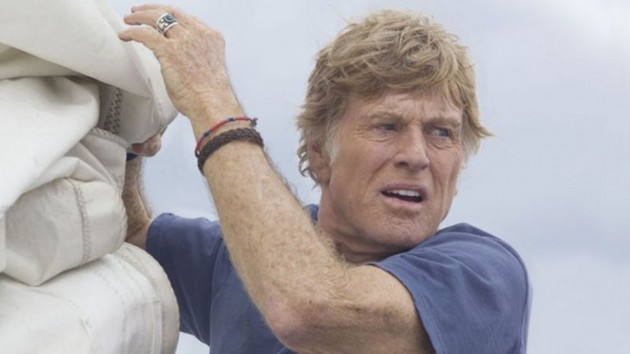
In a sublimating turn not unlike that in The Martian, these philosophical questions (which, depending on the viewer, come across either as grand and grave, or as pretentious and trite) are anchored in a narrative that unfolds in the film’s subtext. Yet again, the modal machinations of adventure, even when they confront death more directly than pop culture usually accommodates, seem unable to say anything of significance about death in the surface narrative. In the radical stripping down of the film to its allegorical dimension, that subtext in All Is Lost is defined by the fact that the film is carried by a single character, played by Robert Redford, an actor with considerable star power. With only one single character carrying the entire film, viewers might be more than usual aware of the fact that they are watching Robert Redford. As in The Shallows, a comparable adventure story of ocean survival carried by a single character (the actress Blake Lively), “stardom is at the heart of the film” (Brody 2016).
To understand Redford’s appearance in All Is Lost, it is worthwhile to note that Richard Brody, in his review of The Shallows, immediately concludes that since the single adventuress “is played by a star, Blake Lively, it seems a foregone conclusion that she’ll survive the ordeal, and the only question is how—or, rather, what credibility-straining heroics and cinematic shock effects the director, Jaume Collet-Serra, will cram into the story of her survival” (Brody 2016). If, by the same token, Redford’s death at the end of All Is Lost is not simply, and somewhat perversely, operating against the logic of star power, his character’s death becomes sub-textually associated with Redford’s star persona. To the degree that Redford’s star persona shines through the character he plays in the film, the superimposition of the two in the viewers’ mind creates “Our Man” specifically as concretely embodied by Robert Redford. While an exact and detailed portrait of Redford’s star persona exceeds the range of this argument, it is easily sketched in with a few broad strokes. Though Redford still commands a considerable degree of star power, he no longer commands a large audience outside his own demographic (a result not only of his own star power fading but of the traditional concept of the star itself eroding). The frequent close-ups of Redford’s face highlight the actor’s age, a fact tied immediately to his generational cohort. This, then, becomes the allegorical subtext of the film—an old man facing the end, both as an individual and as a representative of his cohort and its legacy.
The politics associate with Redford’s star persona also figure into this self-reflexive allegory. Though All Is Well never casts an illuminating look into the deep background of Our Man, the fact that he is on an extended sailing trip in a boat that clearly belongs to him testifies to his social and economic privilege. The endeavor that is, perhaps, to cost him his life corresponds to a highly specific idea about “adventure,” defined to some extent by gender (the late male identity crisis calling for outrageous escapades like sailing the Indian Ocean single-handedly). To a greater extent, however, it conforms to the image of Baby Boomers, as seen by successive generations, defined by an upper-middle class combination of financial resources, acquirable skills, specific types of leisure activities associating self-discovery with “adventure.” 5 In that regard, the stripping away of all earthly possessions, and even the erosion of the hope to survive, might very well be read as necessary steps in the preparation for the character to die, a diametric reversal, if you will, of that 1980s bumper sticker yuppie mantra, “He who dies with the most toys, wins.”
Associated with the political filmmaking of nascent New Hollywood—first as an actor, then as a producer, and, most importantly, as a powerful advocate and activist steering cinematic taste over a long period of time—Our Man’s trajectory toward death becomes legible as an allegory about the accomplishments and the passing of the Baby Boomers. To the extent that this is very much Redford’s film—more so than The Martian being Matt Damon’s film— All Is Lost also situates itself as an outlier, an oddity, an outsider’s project, within a Hollywood landscape dominated by superhero franchises, a version of a New Hollywood film aware of its own marginality and historical obsolescence.
Conclusion: Rescue by Subtext
As actors of Robert Redford’s age ready themselves for one more brush with death in long-running adventure narratives—Harrison Ford being scheduled for yet another Indiana Jones sequel, while Mark Hamill has, as of late, been swinging his light saber in yet another Star Wars sequel—Redford’s allegorical investment in All Is Lost demonstrates that adventure can flourish as a viable form of artistic expression beyond the bounds of simple modal machinations. That the film accomplishes this by challenging adventure’s central trope—that true adventure must not end in death, no matter how vividly and compellingly this possibility has been evoked—suggests that formulaic rigidity is a double-edged sword. In a film following faithfully the conventions of its mode or genre—a film that wants to be nothing more than adventure—it produces a degree of predictability that smacks of creative exhaustion and incipient cultural irrelevance. Even the potential of such films to provide much needed escape from the pressures of reality is in question. In a film willing to go beyond these conventions, however, formulaic rigidity allows for the opening up of subtexts in which the failure to live up to genre expectations does little to diminish the viewer’s pleasure in whatever is happening in the subtext. If The Martian is indicative of how far films in the cinematic mainstream can go in this direction, then that film’s ability to be haunted by its own subtext of loss and finality suggests merely a gradual rather than categoric departure from films less dependent on massive box office revenue. This is, in other words, not simply a matter of Hollywood being less daring and unconventional, and smaller, independent productions pushing the envelope, first and foremost by risking to disappoint and alienate viewers. The difference lies, to some degree, in the issues addressed in the subtext, but, more importantly, in the strategies each type of film has at its disposal to transfer these issues from surface to subtext. Still, the expanding reach of thematic associations I have tried to outline both for The Martian and for All Is Lost remind us that even the films in which adventure is haunted most poignantly by death would much rather talk about something else. Even in these films, death remains incommensurable with adventure. At best, what these films do for their viewers—no matter if they are aging Baby Boomers, or the younger demographic flocking to science fiction adventure on the final frontier of outer space—is what the game does that the children are playing in the opening scene of Fritz Lang’s M as they count down who is going to die next. “The horror of this scene,” as framed by Lang, is “one of infantile re- or, more precisely, _pre_-enactment of a more serious adult predicament, [and thus] lies in the players’ latent recognition of something we as adults already know: what it means to be the last one, the one at which that finger is pointing, the inevitable final victim of a process of elimination” (Hantke 33). While current pandemic conditions seem to call all the more for innocent escapism, the assumption that even the most childish of games is free from the awareness we bring to it when we, the players, are adults. The global death toll might end up complicating the willful innocence required to enjoy the adventure narrative’s vicarious threats of death.
Secondary Sources
Brody, Richard. “’The Shallows’ Sticks All Too Close to the Surface.” The New Yorker.
https://www.newyorker.com/culture/richard-brody/the-shallows-sticks-all-too-close-to-the-surface. Posted June 24, 2016.
Godwin, Tom. “The Cold Equations.” Astounding Magazine. (1954),
Hantke, Steffen. “Counting Down: The Elimination Plot in Horror Film and Beyond.”
StoryTelling: A Critical Journal of Popular Narrative. Summer 2009. 19-37.
Rubin, Martin. Thrillers. Cambridge/New York: Cambridge University Press, 1999.
Tasker, Yvonne. “Introduction: Action and Adventure Cinema.” Action and Adventure Cinema.
Ed. Yvonne Tasker. Routledge: London/New York, 2004. 1-14.
——-. The Hollywood Action and Adventure Film. Blackwell: Malden, MA/Oxford: 2015.
Waschbüsch, Lukas. “Profiabenteurer: Wenn man weiß, wie es ausgeht, ist es kein Abenteuer.” https://www.zeit.de/entdecken/reisen/2021-01/profi-abenteurer-christo-foerster-reisen-mikroabenteuer-freiheit-pandemie. Posted January 28, 2021.
Williams, Linda. “Film Bodies: Gender, Genre, and Excess.” Film Quarterly 44.4 (Summer 1991): 2-13. http://faculty.las.illinois.edu/rrushing/470j/ewExternalFiles/Williams% E2%80%94Film%20Bodies.pdf E2%80%94Film%20Bodies.pdf.
Primary Sources
All Is Lost. Perf. Robert Redford. Dir. J.C. Chandor. Roadside Attractions. 2013.
Clarke, Arthur C. Rendezvous With Rama. New York: Bantam, 1973.
Robinson Crusoe on Mars. Dir. Byron Haskin. Perf. Paul Mantee and Victor Lunden. Paramount. 1964.
Roth, Philip. Everyman. 2006. New York: Vintage 2007.
Star Wars, Episode VII: The Force Awakens. Dir. J.J. Abrams. Perf. Harrison Ford, Mark Hammill, Daisy Ridley, and John Boyega. Lucasfilm. 2015
The Martian. Dir. Ridley Scott. Perf. Matt Damon and Jessica Chastain. Twentieth Century Fox, 2015.
The Shallows. Dir. Jaume Collet-Serra. Perf. Blake Lively. Village Roadshow. 2016.
“Space Mistakes.” Saturday Night Life. https://www.youtube.com/watch?v=FBFuiHZRylY. Posted October 27, 2019.
Star Trek: Picard. Perf. Patrick Stewart and Alison Pill. CBS All Access. 2020- .
Tolstoy, Leo. The Death of Ivan Ilyich. 1886. London: Penguin Classics UK, 2016.
Notes
- See Williams, “Film Bodies” (http://faculty.las.illinois.edu/rrushing/470j/ewExternalFiles/Williams%E2%80%94Film%20Bodies.pdf But the situation also applies to something that is less than a cinematic genre and more of a larger cultural mode in which these genres can be articulated—that of adventure. [[Examples from IMDb.com’s listing of films always use “adventure” as a modal modifier requiring a cinematic genre to attach itself to. The Martian, e.g. is listed as “Adventure, Drama, SciFi,“ while All Is Lost, is listed as “action, Adventure, Drama. A film like The Shallows (2016) is listed as “Action, Drama, Horror,” with the presence of the shark as a genre-determining signifier of monstrosity, while the film might also fall into the more narrowly defined subgenre of the “survival thriller.” ↩
- Author’s translation ↩
- Elsewhere, Tasker has made a distinction between both terms’ respective function within this pairing: while “action” suggests “a sort of filmmaking (in effect, technique) and a specific set of pleasures, whilst adventure relates to a kind of story. Action presents the story of adventure in a particular (thrilling) way” (Tasker 2004: 6). The preoccupation with death, therefore, is largely a matter of adventure, while the application of “action” conventions render this thematic preoccupation in a way that gets viewers to start and shudder, tense and relax, and perform all those other physically empathetic reactions parallel to those of the characters on screen. ↩
- I am using the term “escapist” not in a pejorative, but in a descriptive sense, referring to the positing of a fictional counter-reality in which the pressures and stresses of reality addressed by being specifically targeted and actively excluded from representation ↩
- Incidentally, The Shallows reiterates these privileges more as a matter of social class than generational cohort in its protagonist’s idea of a good time as an international tourist. That film makes even more explicit, by way of its tropical beach setting, the lasting alignment between the classic adventure narrative, reaching back to European national literatures in the nineteenth century and before, and Western imperialism. Though the emptiness of the ocean in All Is Lost tends to downplay this aspect, contemporary tourists like the ones in The Shallows carry the torch of Westerners redefining global spaces by traversing them in pursuit of a tourist agenda. ↩


